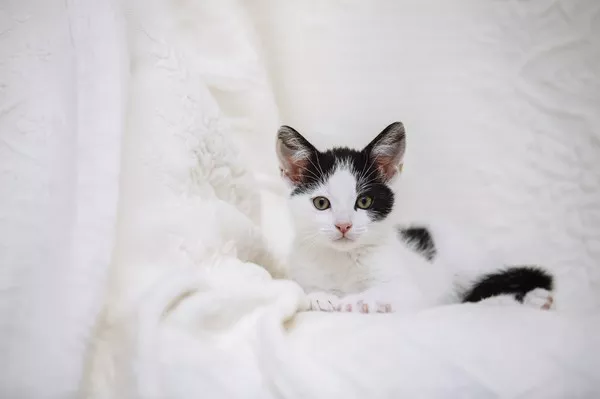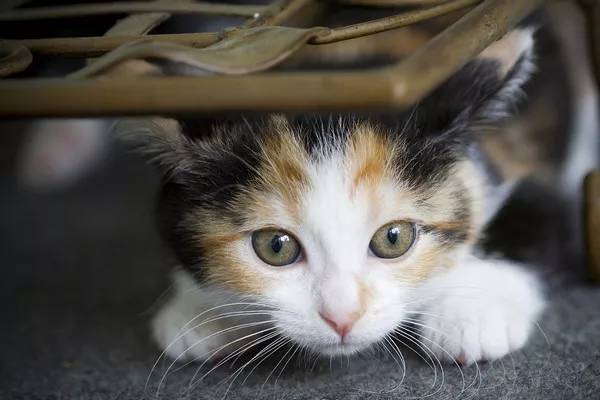Calico cats have long been a source of fascination and intrigue in the world of feline enthusiasts. Their striking coats, a mosaic of vibrant colors and distinct patterns, often prompt questions about their rarity.
Exploring the genetics, characteristics, and prevalence of these mesmerizing felines provides insights into the question: Are calico cats really rare? Here, we delve into the scientific facets surrounding these uniquely colored cats and address the query with a focus on the rarest types of calico cats.
Understanding the Calico Cat: What Sets Them Apart?
Calico cats, recognized for their tri-color coats, are predominantly females, a genetic anomaly linked to the X chromosome. Their fur showcases a blend of white with patches of two other colors, typically black and orange or, more accurately, red. These felines exhibit a diverse array of patterns, ranging from blotches and spots to more intricate designs like the classic “patchwork” pattern. The melding of these colors creates a beautiful, almost mosaic-like appearance, distinguishing calicos from other cat breeds.
The Genetics Behind Calico Coats: Unraveling the Color Puzzle
In understanding the rarity of calico cats, delving into their genetics becomes imperative. What sets these felines apart is a genetic condition known as X-inactivation, where certain genes on one of the X chromosomes in female cats are deactivated, leading to the distinct coat patterns. This phenomenon results in the variegated coat and is specifically tied to the presence of two X chromosomes in females.
Male calico cats are extraordinarily rare due to their genetic composition—typically having an extra chromosome (XXY) or being chimeras.
What Determines the Rarity of Calico Cats?
The rarity of calico cats is influenced by multiple factors. Firstly, the genetic probability of the X-inactivation process is a crucial aspect. The intricate dance of genetics must align perfectly for a cat to exhibit the tri-color coat, making it an uncommon occurrence. Moreover, the predominance of females in the calico population further contributes to their perceived rarity. However, within the world of calico cats, there are variations that lead us to the question: what is the rarest type of calico cat?
Variations in Calico Cats: Exploring the Rarest Types
Amid the diverse spectrum of calico cats, certain variations are considered exceptionally rare. One of the rarest types of calico cats is the dilute calico. Unlike the conventional calico colors of red and black, dilute calicos display more muted tones—pale creams, soft grays, and light apricot hues instead of the usual vivid colors. This variant occurs due to a dilution gene, resulting in a softer, more pastel-like appearance. The rarity of dilute calicos lies in the combination of specific genes, making their appearance less frequent compared to traditional calico cats.
The Elusive Tortoiseshell and White Calico: A Sought-After Rarity
Tortoiseshell and white calico cats present another rare and sought-after variation. This distinctive type merges the unique attributes of both tortoiseshell and calico cats. Their coats display the standard calico tri-color pattern with the addition of patches of solid color, usually black or red. These cats possess a harmonious fusion of the striking calico colors with the elegance of solid patches, making them an especially rare and coveted type within the calico spectrum.
Exquisite Caliby Cats: Defining Uncommon Elegance
Caliby cats, a combination of calico and tabby patterns, represent another rare iteration in the world of calico felines. These cats boast both the tri-color patches characteristic of calicos and the distinctive tabby markings such as stripes, swirls, or spots. The caliby pattern emerges due to the interaction of various genes responsible for both the calico and tabby coat patterns, rendering them a relatively rare and uniquely charming type among calico cats.
Environmental Factors and Calico Cat Rarity
The rarity of calico cats can also be influenced by environmental factors. In certain regions or specific breeding lines, the prevalence of calicos might differ, leading to varying degrees of rarity. Environmental factors, including selective breeding or geographical isolation, can impact the concentration and appearance of specific types of calico cats. This, in turn, may contribute to the perceived rarity of certain variations within the calico spectrum.
Myth vs. Reality: Addressing Common Misconceptions
Despite their perceived rarity, calico cats are not as scarce as often assumed. Their presence is influenced by various factors, and while certain types within the calico spectrum might be less common, calico cats as a whole aren’t exceedingly rare. The misconception of rarity often stems from the visual impact and uniqueness of their coats rather than their actual prevalence in the feline population.
Conclusion: Exploring the Unique World of Calico Cats
In conclusion, calico cats, with their breathtaking tri-color coats and varied patterns, have captivated cat lovers and scientists alike for generations. Their rarity is more nuanced than mere appearance; it’s a blend of genetics, chance, and specific variations within the calico spectrum that contribute to their perceived scarcity. Unraveling the mysteries behind calico cats sheds light on the marvels of genetics and the intricate beauty found within the feline world. The question of the rarest type of calico cat unveils the diverse and enchanting nature of these extraordinary felines, making them a cherished wonder in the world of cats.
FAQs about Caliby Cats:
1. How do Caliby cats inherit their unique coat patterns?
The unique coat pattern of Caliby cats is inherited through a combination of genes responsible for both the calico and tabby patterns. The calico pattern is tied to the X-inactivation phenomenon in females, while the tabby patterns are controlled by specific genes that produce stripes, spots, or swirls. The interaction of these genetic elements results in the visually stunning appearance of Caliby cats.
2. Are Caliby cats more rare than traditional calicos?
Caliby cats are relatively rarer than traditional calicos. While calico cats are known for their tri-color coats, Caliby cats represent a subset of calico felines due to their unique combination of tabby markings. The specific genetic combination required for both calico and tabby patterns to manifest in one cat makes Caliby cats less common compared to traditional calicos.
3. What colors and patterns are typically seen in Caliby cats?
Caliby cats generally display the classic calico tri-color pattern: patches of white, red, and black. However, the inclusion of tabby markings introduces a variety of patterns within these colors. You might find tabby stripes interwoven with the tri-color patches or a mix of swirls and spots creating a delightful and varied appearance in their coat.
4. Do Caliby cats have specific personality traits associated with their unique coat pattern?
The personality traits of Caliby cats are not directly linked to their coat patterns. However, like many calico cats, Caliby cats are thought to have diverse and strong personalities. They can be affectionate, independent, and playful, with individual variations in behavior. The unique patterns of their coats do not dictate their temperament but contribute to their overall charm and beauty.
5. Are Caliby cats recognized as a distinct breed?
Caliby cats are not recognized as a specific breed but rather as a descriptive term referring to the combination of calico and tabby patterns. They can be found among various breeds and are more of a unique and visually striking variation within the broader category of calico cats.
6. Can you breed Caliby cats deliberately?
Breeding Caliby cats deliberately involves specific knowledge of the genetics behind their coat patterns. Breeding for these particular patterns requires the understanding of both the calico and tabby genetic traits, which can be complex. While Caliby cats can be bred intentionally, achieving the desired combination of coat patterns might not always be predictable.
7. How rare are Caliby cats compared to other types of calico variations?
Caliby cats, due to their distinctive blend of calico and tabby patterns, are relatively rarer compared to other types of calico variations. Their unique combination and the specific genetic interplay necessary for their coat patterns make them less common than traditional calicos or other calico variations like dilute calicos or tortoiseshell and white calicos.
8. Can you find Caliby cats in shelters or rescue centers?
While less common than traditional calicos, Caliby cats can still be found in shelters and rescue centers. Due to their unique appearance and eye-catching coat patterns, they might garner attention when available for adoption. Individuals interested in adopting a Caliby cat can inquire at local shelters or contact rescue organizations to inquire about their availability.
9. Are there specific health considerations for Caliby cats due to their coat patterns?
Caliby cats do not inherently have unique health considerations due to their coat patterns. As with all cats, regular veterinary check-ups, a balanced diet, and proper care are essential for their overall well-being.
However, genetic predispositions or specific health concerns might vary depending on the breed or combination of breeds within the Caliby cat.
Caliby cats, with their rare and beautiful combination of calico and tabby patterns, continue to capture the fascination of cat enthusiasts with their distinct appearance and unique charm. While relatively rarer than traditional calicos, their striking coats and diverse personalities make them a captivating addition to the world of feline diversity.
Related Topics:
Why Do Calico Cats Meow So Much? [3 Top Reasons]
8 Questions About Calico Cats — Answered
Why Are Male Calico Cats So Rare?


























